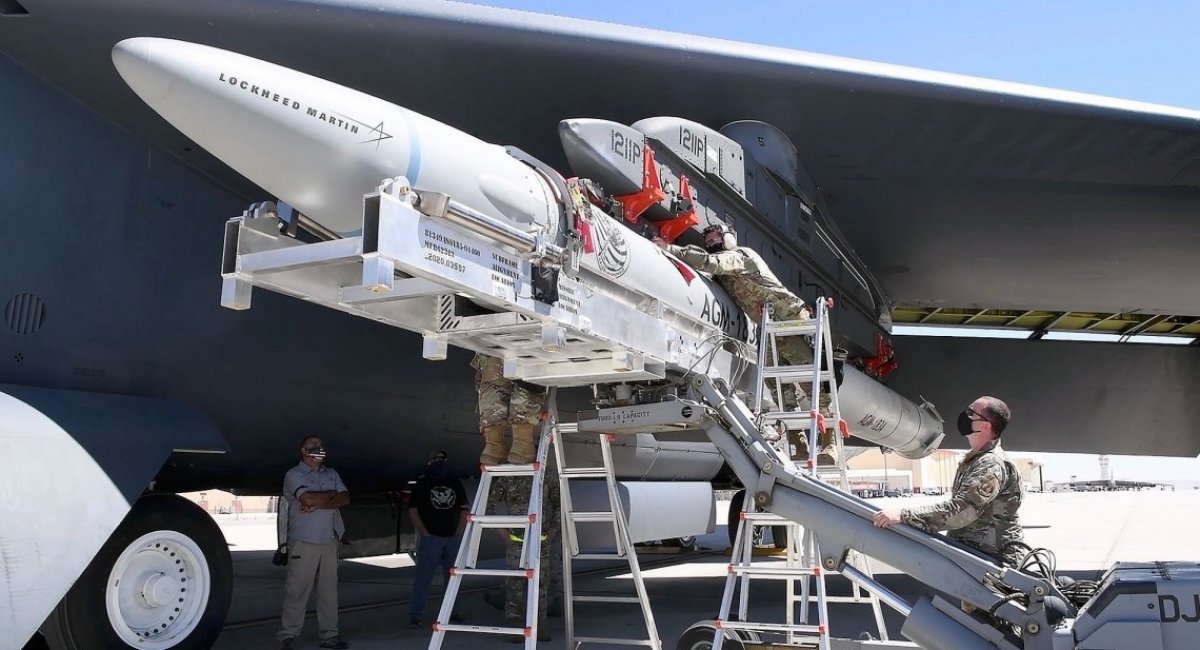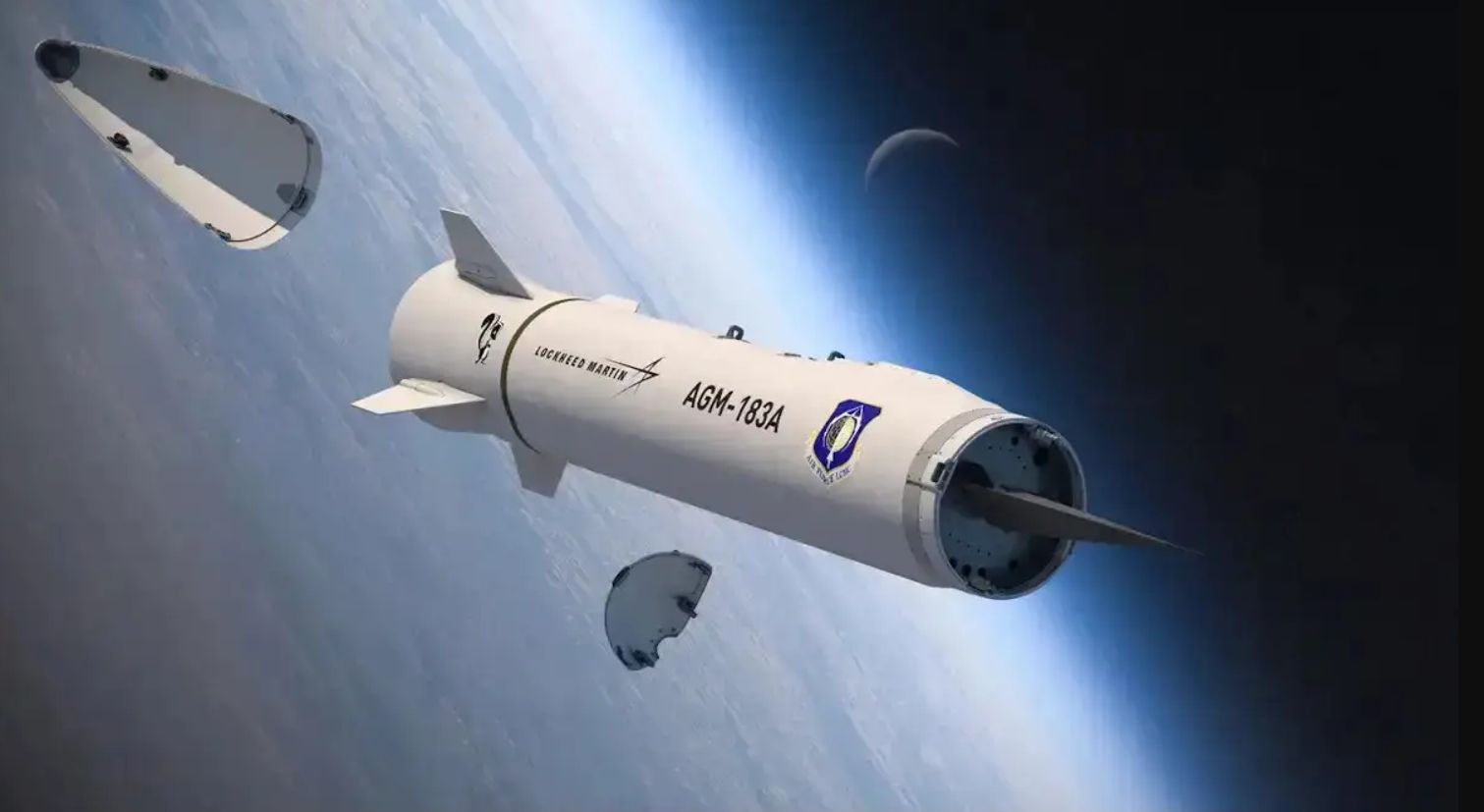The United States (US) government’s draft defense budget may end even the little life left in the troubled AGM-183 Air-Launched Rapid Response Weapon (ARRW) – the US Air Force’s (USAF) hypersonic missile project.
Twisted Tires! Canadian Armored Vehicle Supplied To Ukraine ‘Falls Apart’ In Tough Ukrainian Terrain
The program may not get the funding to complete even a final few tests if proposals by the chairman of the House Armed Services Committee (HASC), Representative Mike Rogers, on the National Defense Authorization Act (NDAA), are accepted.
According to a report in Air and Space Forces, Rogers has “completely removed” the $150.3 million on “completion work” on the ARRW following such a request from the USAF itself.
“The Air Force had requested to ‘close out’ and collect data from the program, which the service has said it won’t pursue into production after a series of test failures,” the report said.
ARRW & HACM Hypersonic Projects
Congress now plans to divert attention and funding into the Hypersonic Attack Cruise Missile (HACM), the USAF’s other hypersonic program, that is being developed by Raytheon and Northrop Grumman.
A section of scientists and politicians, however, urged patience with highly complex technologies like hypersonics, pointing chiefly to the poor frequency of testing and lack of testing facilities in the US as the reason for its lag in the area.
The ARRW’s demise began after a failed test on March 13 when the missile was fired from a B-52H Stratofortress off the coast of California.
Air Force Secretary Frank Kendall later told a Congressional hearing on March 28 that the “tests were not successful (and we) did not receive data from the tests that we needed.”
The missile suffered a series of test failures in 2021, followed by a successful all-up flight in 2022.

Kendall had also reasoned that the HACM would have more utility since it is smaller than the ARRW and could also be carried by more aircraft, including fighters.
The ARRW, meanwhile, could only be launched by larger bomber aircraft. The ARRW is a boost-glide vehicle where it is accelerated by a rocket, following which it glides to its target.
The HACM, meanwhile, is an air-breathing cruise missile powered by a scramjet engine.
Following Kendall’s appearance, Air Force acquisition chief Andrew Hunter stated in a written testimony before the HASC a day later, on March 29, that the USAF “does not intend to pursue follow-on procurement” of the ARRW.
Reports say that there are still two ARRW missiles left, with the program’s backers saying there are some benefits from continued testing.
Mark Lewis, head of the National Defense Industrial Association’s (NDIA) Emerging Technologies Institute (ETI) and a national expert in hypersonics, pointed to the heavier, more explosive, and longer range option the ARRW provides and the impracticality of expecting rapid success with complicated technologies without repeated testing.
He, however, did not undermine the HACM, saying both small, mass-fired, and heavier missiles have their advantages. Particularly, he maintained how boost-glide vehicles are more difficult to track than air-breathers. Lewis is also the former Chief Scientist of the Air Force.
Don’t Abandon, Keep Testing
Hunter himself, in his written testimony, recommended “completing All-Up Round (AUR) test flights…to garner the learning and test data that will help inform future hypersonic programs and potential leave-behind capability.”
“I think people underestimate how hard it is to actually build a tactical-scale rocket/boost-glide system. (Moreover, in weapons programs), there are noble failures when things don’t work because you genuinely didn’t understand the physics; you made a mistake in engineering, but it’s all good because you needed to learn more. And there are stupid failures, where the fin falls off, or the booster doesn’t light, or whatever. I hope we wouldn’t cancel something because of a stupid failure,” he said.
Lewis and Representative Doug Lamborn echoed similar views in a May 12 seminar by ETI. Lamborn called for more investment in hypersonic test facilities and increased testing. Lewis meanwhile recommended newer testing approaches, like testing “specific parts” of a hypersonic system instead of the complete missile and “creating digital models” to reduce the engineering complexity.

The digital model approach has also been taken for the B-21 Raider program, where Northrop Grumman has advertised the technique in its publicity material.
With regards to testing infrastructure, the ETI report recommended upgrading ground-based testing facilities like wind tunnels and “additional arc jet facilities providing ground-based hyperthermal environments” to support the testing of thermal protection materials and vehicle structures.
Interestingly, China achieved a lead here, too, with the development of the JF-22 hypervelocity wind tunnel, which will allow it to simulate flights at Mach 30.
- The author can be reached at satamp@gmail.com
- Follow EurAsian Times on Google News




